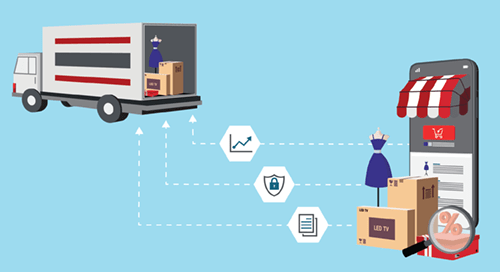Until recently, app developers had only one choice when it came to accessing and using a company’s API: an API portal. But portals are basically just a holding bin for APIs that developers generally have to rummage through to find the right one. It’s like searching a drawer full of new, old, worn, and obsolete device cables of various lengths, thicknesses, and connectors. Good luck locating the one you need.
An API marketplace, on the other hand, is where APIs are treated like the valuable products they are. APIs that are promoted to an API marketplace are packaged, merchandised, and documented — giving internal and external app developers the contextual relevance they need to find and adopt the right API product more easily. That way, new digital initiatives get to the market — and the business value of every API is realized — as soon as possible. Here are a few specifics on why you need an API marketplace.
Stop API sprawl
Your APIs need to be easy to find, otherwise your developers will default to building them themselves — a situation that leads to API sprawl, where similar one-off APIs are all over the place. If IT leaders, developers, and line-of-business users don’t know where an API is, or whether it even exists, you may end up duplicating it — a waste of time, money, and resources. An API marketplace enables you to discover any duplicate, unsanctioned, or unmanaged APIs in your enterprise and partner ecosystem to eliminate sprawl.
Master API complexity
Most companies have multiple API management platforms and knowing how to get access depends on the team, the platform, and the deployment location. Inefficient workarounds like manual consolidation, proxy gateways that lock you into a certain vendor, or API portals that provide no API management capability, only add to the complexity.
An API marketplace does away with complexity by not only bringing all APIs together in one place, but also giving API developers greater autonomy to use the tools that work best for them without being restricted to the requirements of any one vendor.
Maximize API consumption
APIs are worthless to your business unless they’re adopted by application developers who will embed them in the latest game-changing app. Success is not determined by how many APIs you have, but the business value they generate through usage. Without a secure, centralized, easily accessible marketplace of all APIs, they won’t be consumed and won’t deliver on expected business outcomes.
With an API marketplace, IT teams can track which APIs are being used and who is using them as well as how they’re performing. Insight from these metrics is key to driving increased API consumption and making better API investment decisions moving forward.
Avoid needless proxy gateways
Having a proprietary gateway installed as a proxy in front of other gateways introduces several issues, including driving up cost, latency, and deployment time. It also creates an unnecessary point of failure. Developers must now operate in that vendor’s universe, which leads to
additional training, operational management, and vendor lock-in.
By contrast, an API marketplace built on a universal API management platform enables fully automated, agent-based observability and subscription management out-of-the-box. No manual registration or proxy deployments are needed to connect securely with API catalogs or other gateways, so there’s no lock-in.
Expand beyond simple API aggregation
Unlike public API marketplace offerings that are basically just public aggregators of APIs, an enterprise API marketplace focuses on the needs of companies to deliver greater business value through private marketplaces containing their API products.
This kind of API marketplace builds on the functionality of a universal API management platform, with security policy definition and enforcement capability that public marketplace-only providers can’t offer.
It also allows companies to curate their APIs in a way that makes them more discoverable and applicable to the user experience and digital business goals.
Monetize your APIs
Companies that include your new digital service in their apps also stand to reap the benefits of putting a more complete digital experience in the market faster — to the point where they’re willing to purchase a subscription to the instantly consumable API products in your marketplace. This is really not possible with an API marketplace.
The idea is to make finding the right API easy for external developers. By curating and presenting API products in a more contextual way, internal and external developers have immediate access to what they’re looking for. An API marketplace allows you to package your APIs by various criteria in a central location, so you can market each of your APIs as the valuable products they are.
Want expert advice on how to set up your API marketplace for success?














